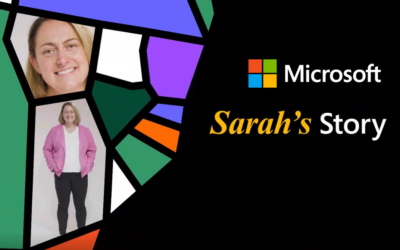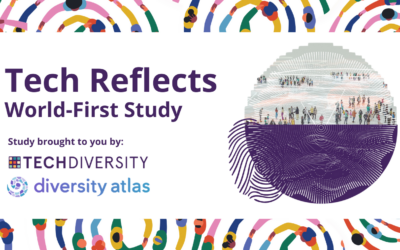Introducing Dr. Joni Sytsma, a trailblazer at the forefront of aerospace engineering and diversity advocacy. We hosted a Q&A with Dr. Sytsma to uncover the narrative of a truly remarkable individual shaping the future of both technology and inclusivity.
As a lead for the iLAuNCH program, Dr. Sytsma orchestrates a collaborative effort among over 20 industry organisations to propel Australia’s independent space capability forward, addressing critical gaps and accelerating the development of a thriving space technology sector.
With a wealth of experience in successfully navigating the complexities of aerospace systems, Dr. Sytsma brings a unique blend of expertise and vision to the table. Beyond her technical prowess, she stands as a dedicated advocate for diversity, especially championing professionals from the LGBTQIA+ community.
Dr. Sytsma’s journey intersected with TechDiversity recently via an event organised by CSIRO ON Core as she participated on a panel with Luli Adeyemo, Executive Director, TechDiversity entitled “Celebrating Diversity in Innovation,” where her insights illuminated the transformative power of diversity in driving innovation, breaking down barriers, and fostering genuine change within the industry.

Dr. Joni Sytsma, Chief Technology Officer, iLAuNCH and Darin Lovett, Executive Director, iLAuNCH (image source: Dr Joni’s LinkedIn post)
Biography
Dr Joni Sytsma is a driven and enthusiastic technology evangelist, internationally experienced science and technology leader, research and development scientist and engineer, innovator, mentor, and diversity advocate with a track record of leading teams to develop deep tech products, projects and programmes towards ambitious launch dates.
She is passionate about utilising cyber-physical systems and manufacturing in emerging technologies in aerospace applications to deliver immense value for civilian and defence customers. She has experience in executive leadership, strategic business partnerships, product management, lean startups, systems engineering, program management and major government programmes in Australia and the US.
Question and Answer (Q&A)
Can you share what your role is in iLAuNCH and why this program is important to Australia’s future space capability?
As the Chief Technology Officer (CTO) of the iLAuNCH program, my primary role involves overseeing the program’s scope and managing the full spectrum of technical activities. This includes assessing and mitigating risks, evaluating the technology readiness levels, and engaging in business development to refine project scopes and secure contracts, ultimately bringing projects to fruition.
iLAuNCH is a cornerstone of our national space program, playing a critical role in the research and innovation landscape. We focus on advancing space technologies from a technology readiness level of four or five to seven or eight. Essentially, this means we transform promising space technology prototypes into tangible hardware that is either prepared for space travel or already orbiting the Earth. This phase marks the transition from theoretical research to practical, deployable space technology products.
Did you always dream of becoming an Aerospace Engineer?
If there’s one thing I’ve always wanted to be, it’s a rocket scientist. I am deeply fascinated by the imagery of space, rockets, and satellites, and I’ve always had a strong desire to build and develop these technologies. This intense passion for the field has shaped my career path, leading me to my current role. I am an enthusiastic supporter and promoter of space technologies, and I aspire to become as skilled a scientific communicator as Neil deGrasse Tyson. Indeed, I have always aimed to be an aerospace engineer, holding a Bachelor’s, Master’s, and PhD in aerospace engineering. However, it’s important to note that aeronautics, space, and nautical engineering are distinct yet interconnected branches within this cutting-edge field.
Is diversity within the space industry where it needs to be? What’s the cost if we don’t continue to strive for diversity inclusion?
Diversity in the space industry unfortunately largely mirrors what we see in other tech-heavy industries, which is to say, it’s not a great story. The government has largely acknowledged that Australia faces a significant worker deficit. When we talk about a non-diverse workplace, we’re really saying that there are some absolutely amazing workers who will never work for you because of a lack of diversity.
So, what is the cost? The cost is our inability to compete in the global marketplace for space. If any marketplace is inherently global, it is certainly the space sector. Without a diverse workforce, we won’t be able to compete, especially since we’re not at the forefront of the space race. In fact, Australia entered the space race quite late, so any advancements made in the past decade could potentially be lost.
What does diversity inclusion look like?
Diversity and inclusion begin with ensuring not every face in the room is the same color or gender. It extends beyond that to include diverse mindsets, working styles, and capabilities. The diversity of education is also crucial, as engineers, business professionals, and legal experts all think differently. Without these diverse perspectives collaborating, the result would likely resemble the output of a singular business activity, which generally does not lead to successful outcomes. Thus, effective diversity and inclusion create an environment where almost anyone from the outside can look at it and say, “I would fit in working there.” Conversely, if people feel they do not belong because of what they see, it could significantly diminish the chances of attracting great talent.
What are some of the most common diversity barriers you see or have experienced?
I’d say momentum is a significant diversity barrier. When I entered the workforce almost 20 years ago, women, particularly in the aerospace engineering STEM workforce, represented such a small percentage. Even in my area, where we claimed some of the highest numbers in the organisation, it was still around 20%. Now, 18 years later and on the other side of the planet, my small area can boast excellent diversity and inclusion numbers. However, looking at the broader workforce, the situation is still not great.
So, how do you persuade women, and other minorities, to work extremely hard and dedicate themselves to their studies only to enter a field where they’ll face an uphill battle because they’re different from the leadership, which is always entrenched? How do you convince people to opt into these roles when leadership and management still largely reflect a homogeneous group? The biggest barrier often lies in leadership because of a selection bias: people tend to choose leaders who look like what they believe leaders should look like. These leaders, in turn, select others who resemble themselves. Until diversity is fully represented at the leadership level, how can we expect the rest of the workforce to follow?
What are some actions leaders, those hiring and influencing can do to improve or at least breakdown some of these barriers?
As I mentioned above, I believe it’s crucial for leadership to be diverse initially because it sets a tone. It signals that diversity is accepted and that individuals at lower levels, who may also be diverse, are as welcome as the leader. Some institutional changes need to begin at the bottom, while others should start at the top. However, it’s problematic when leaders advocate for change without embodying that change themselves. On the other hand, if the leadership at the top is diverse, it can facilitate positive changes.
What’s your advice to someone feeling alone or misunderstood in the workplace due to the lack of adequate diversity supports and awareness?
Depending on your workplace, there are various types of support available. I can only advise that you identify where help is available and actively pursue it. Ultimately, you are responsible for yourself and how you are treated, even if it seems unfair that you must work in such a manner. Identifying corrective actions and assistance is the first step, and actively pursuing these solutions to fruition is the second step.
How has your aerospace engineering background shaped your approach to diversity and inclusion?
I have worked in various aerospace environments, some more diverse than others. From my experience, diverse workforces were not only more enjoyable for me and others, but they also led to significantly more positive outcomes compared to less diverse environments that stifled thought and encouraged groupthink. I firmly believe that diversity makes rockets fly faster. When you bring a variety of people together and break down barriers of judgment, the difference becomes an advantage, allowing for innovative and sometimes unconventional solutions that might just be the best way to solve a problem. Ultimately, engineering is fundamentally about problem-solving. Empowering the workforce through inclusivity, making them happy and productive, is an effective way to tackle engineering challenges.
Lastly, can you provide a short summary around the iLAuNCH and CSIRO’s ON Program collaboration and how it enhances Australia’s space capability?
iLAuNCH is a targeted space innovation program that spans from early research to later commercialisation stages. The CSIRO ON program focuses on teaching researchers the nuanced skills required in business, helping them in the later stages to spin out and commercialise their technologies. It takes researchers with no business experience or exposure and equips them with the necessary business skills. The program assists researchers in discovering customers and understanding how their research can—or cannot—be commercialised. The special iLAuNCH Space cohort, while directly focusing on deep space technology, aims to integrate novel research into space value streams.




